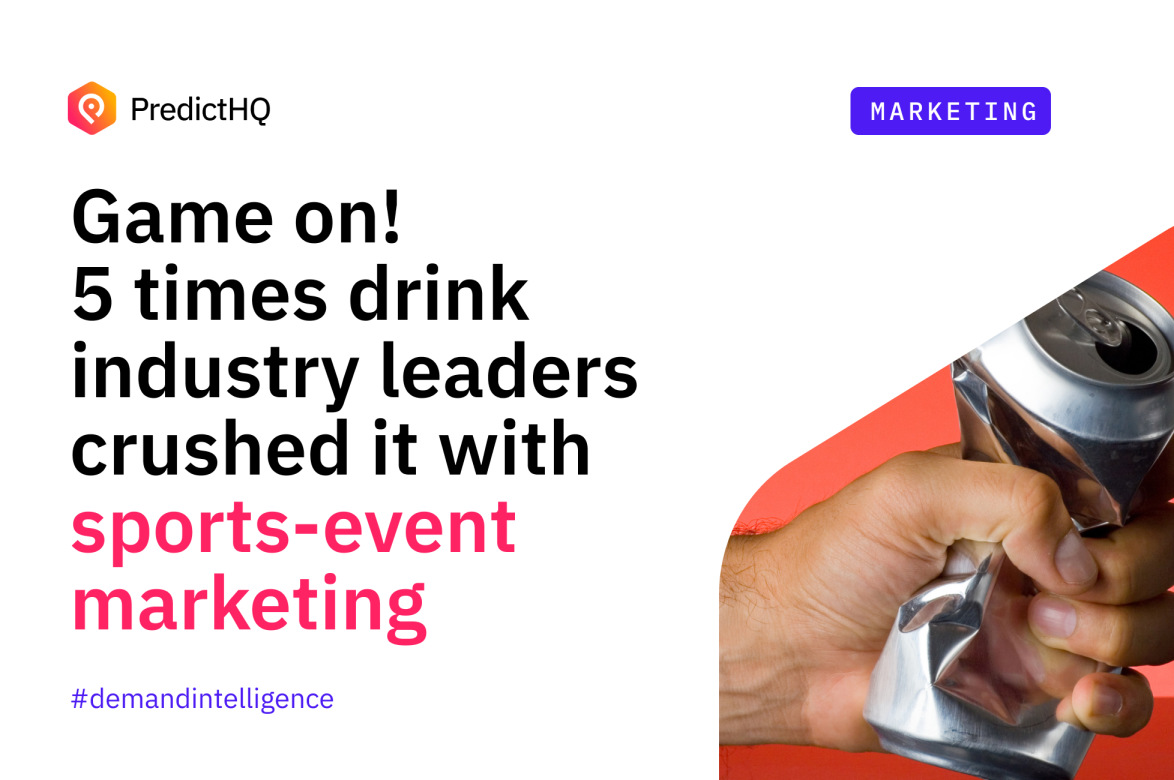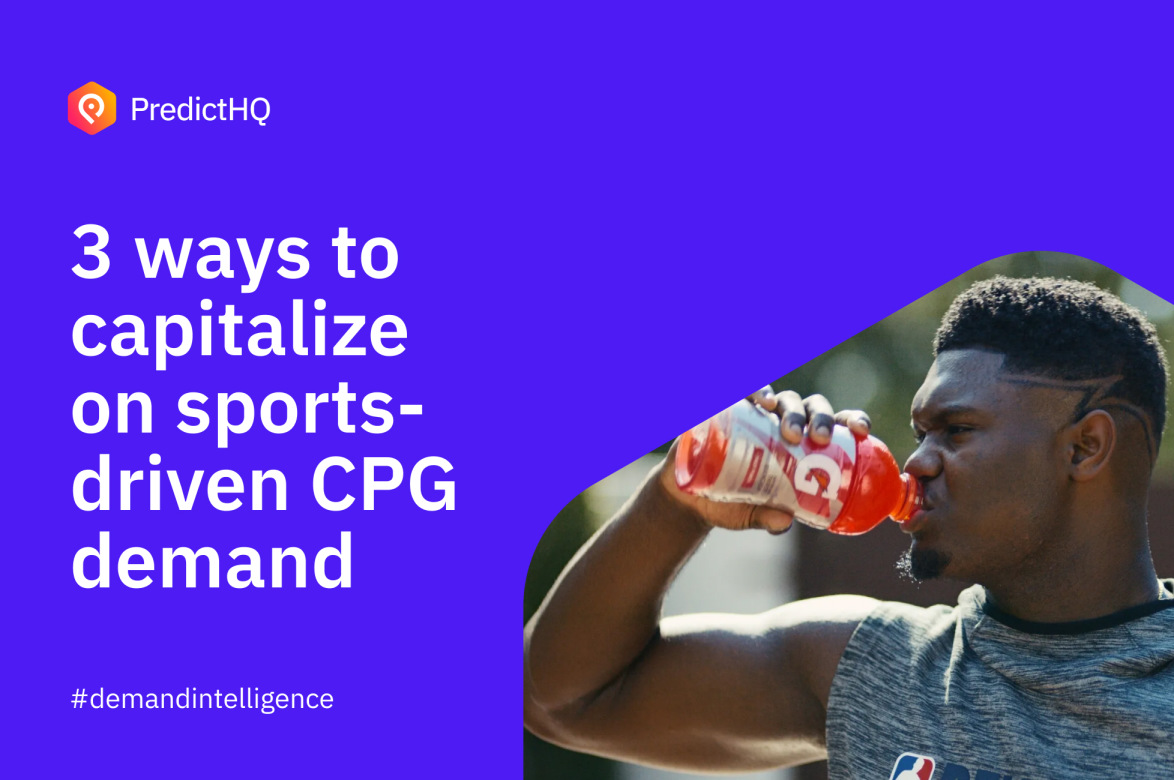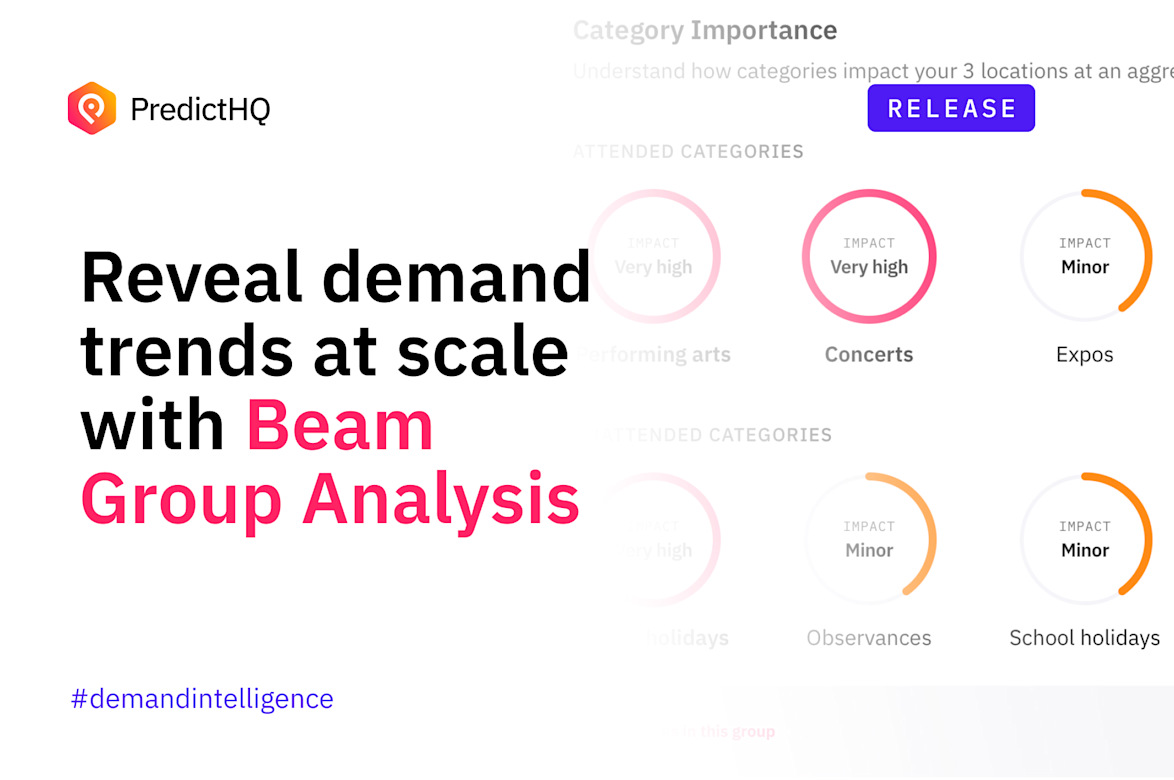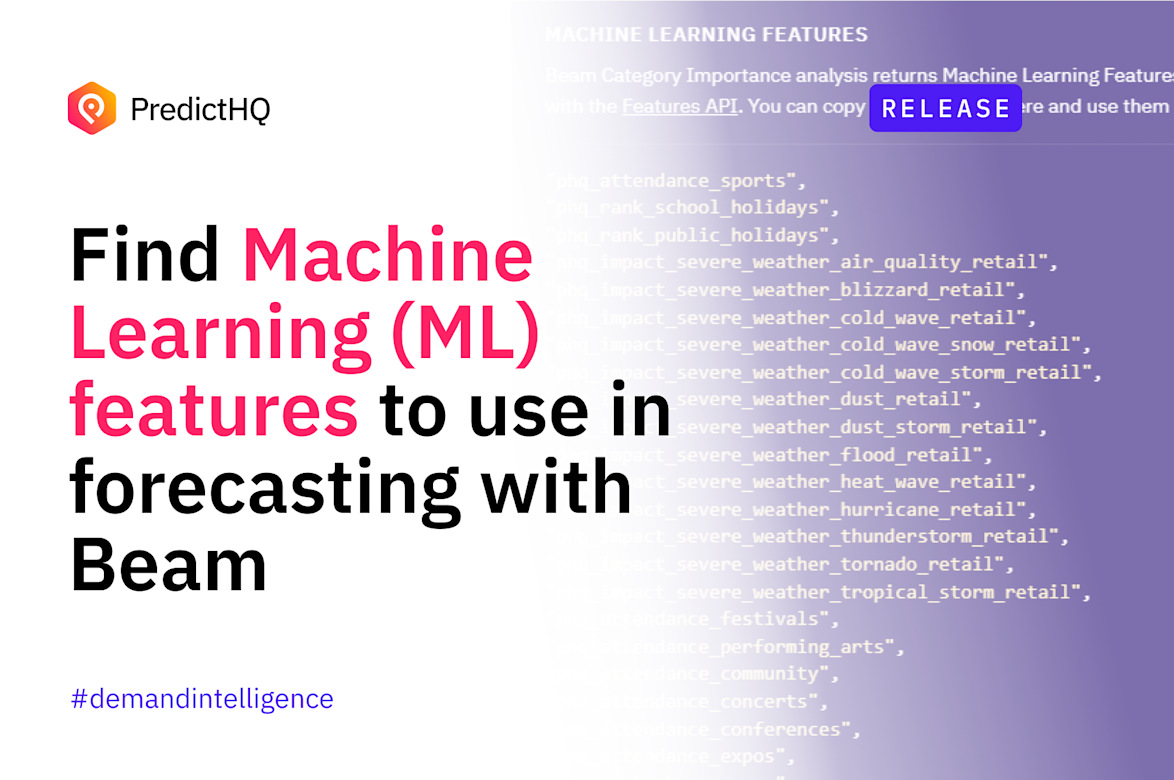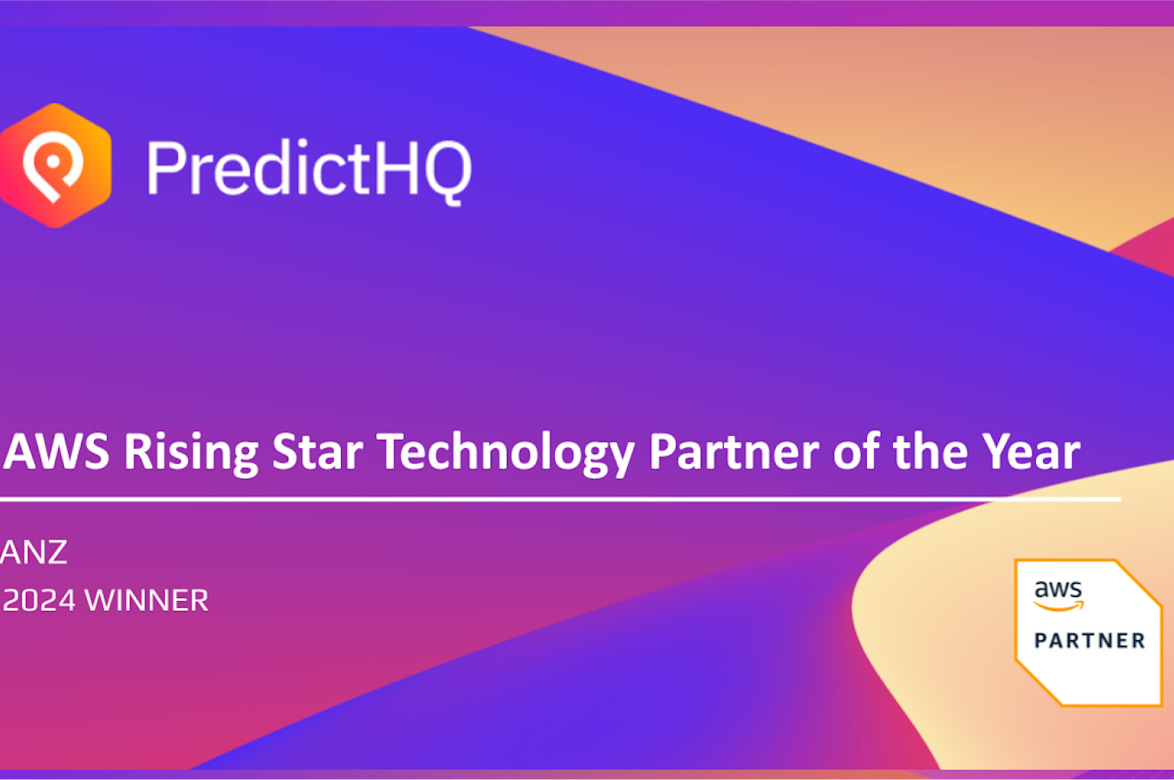4 ways event data gives CPG + FMCG companies a competitive advantage
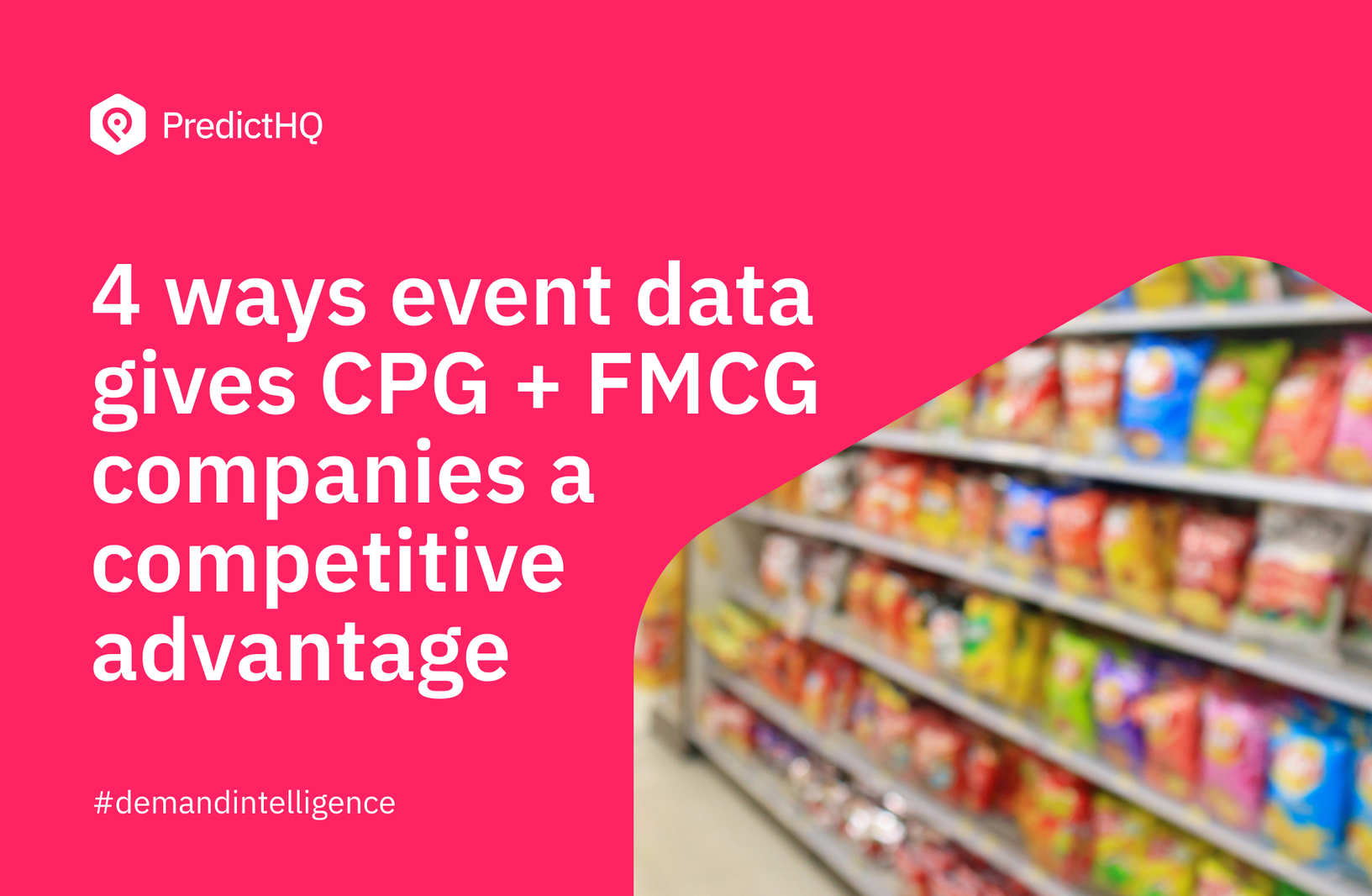
Data gives CPG companies a leg up in an increasingly crowded and fast-paced industry
Consumer packaged goods (CPG) and fast-moving consumer goods (FMCG) companies face intense competition from other businesses within their specific product category, as well as from companies in related categories.
In order to stay competitive, it’s critical for these businesses to effectively market their products, maintain strong relationships with retailers, and continuously innovate and improve their products to meet the changing needs and preferences of consumers. They must also be able to effectively manage their supply chains and logistics in order to get their products to market efficiently, and at a competitive price.
The use of intelligent event data powers strategic business decisions by providing a better understanding of consumer behavior and preferences. By combining this with historical sales data to pinpoint what products consumers are buying and why, fast moving consumer goods companies can make informed choices about which products to develop and market, and how to target their marketing efforts.
Let’s look at four ways these types of companies are leveraging data to improve demand forecasting, expand total addressable market, combat supply chain disruption, and more.
1. Improved forecasts = lower preventable wastage and greater profitability
Consumer packaged goods companies often have a wide range of products and serve a diverse customer base, resulting in them typically relying on mass production and distribution to reach consumers. This is what makes demand forecasting particularly important for these companies – they need a scalable, reliable way to understand consumer demand patterns.
PredictHQ found that a 1% reduction in under-forecasting errors resulted in an average gain of $3.5M in the consumer products space.
Demand intelligence refers to location-based data around events that drive demand for products such as FMCGs – which serves as a crucial forecasting insight to reduce errors in your forecasting models. By using event data to understand what's driving people movement in locations of interest, leaders in the CPG space are quickly identifying the external factors that cause the highest impact on consumer demand, such as sports, conferences, concerts, and expos.
Leading CPG companies use this intelligent event data to anticipate and plan around changes in demand for their products. For example, if there is a major sporting event happening in a particular region, demand for certain types of beverages may increase. By using location-based event data including the predicted number of attendees, a snack or beverage manufacturer can anticipate this increase in demand and adjust their production and inventory in order to meet the increased demand.
Accurately predicting changes in demand for their products not only helps to reduce preventable waste, but it also supports increased profitability as CPG and FMCG companies are better able to meet the needs of their customers while taking advantage of sales opportunities.
While it's not always possible to anticipate every potential change in demand, FMCG companies are using demand intelligence and event data to stay informed about events that are likely to impact demand and be prepared to adjust their production and inventory as needed. By staying agile and responsive to demand hypersensitivity, these companies can better navigate the unpredictable nature of the consumer packaged goods industry.
2. Use event data to focus expansion efforts and target specific areas for growth
Demand intelligence helps CPGs make data-driven expansion decisions, and focus their efforts on areas where they are most likely to see growth and success. Let’s take a look at three examples of how a beverage company can use intelligent event data to benefit their business and expand their total addressable market:
Pinpoint regions with historically high demand : By using PredictHQ’s Beam correlation tool to analyze historical sales and demand data, a packaged foods or snack company can identify regions where demand for their products has been particularly strong. They can then focus their expansion efforts on these regions in order to capitalize on existing demand and potentially grow their market share.
Target regions for growth by better anticipating changes in demand: With visibility into upcoming events, a beer or soda brand can identify pockets of demand in certain regions and adjust their expansion plans accordingly. For example, if there are several major sporting events coming up in a particular region, the company may decide to target that area.
Identify opportunities for sponsorships and new business: Fast moving consumer goods companies such as beverage manufacturers can use event data to identify new business opportunities, such as partnerships with event organizers or sponsorships of specific events. For example, a health beverage company that focuses on athletes. They can identify relevant events such as marathons, medical event conferences, health expos, and more to partner with and expand their brand to a new audience.
3. Better anticipate and prepare for potential disruptions to your supply chain
Supply chain instability and disruptions are expected to continue for at least the next year, causing accuracy issues in demand forecasting to be a major concern for the consumer packaged goods space.
Factors contributing to this instability include changes in purchasing and consumer behavior patterns, rising inflation, labor, and operating costs. All of these have created a difficult environment for supply chain management.
To combat these challenges, CPGs and FMCGs should prioritize improving their forecasting to be agile, data-driven, and science-based, and proactively plan around both expected increases and decreases in demand from events and be the first to know about potential disruptions from unscheduled events, that include things like:
Get actionable insight into unscheduled events disrupting your business. Using demand intelligence can help these companies be more proactive, and better prepared to handle disruptions to their supply chain – which minimizes how much these challenges impact business.
Warnings or alerts about severe weather may lead to disruption and can have a huge influence on your business. Leverage intelligent event data to track the thousands of severe weather events occurring in the USA every month, so you can better manage inventory volumes, supply chains, labor and more.
Use the data to identify and prioritize the most important events in your markets that could potentially lead to supply chain disruptions, such as heat waves, hard freezes, hurricanes, blizzards, floods, and more.
With foresight into unscheduled, supply chain-disrupting events, it’s easier to develop contingency plans for how to respond to different types of supply chain disruptions – such as sourcing alternative suppliers, finding alternative transportation routes, and communicating with retail partners about any potential disruptions and how you plan to address them.
4. Use event data to enhance targeted marketing efforts
Marketing is particularly important for fast moving consumer goods such as alcohol, food, and beverages because these products have a high level of competition and a relatively low level of brand loyalty. This means companies must constantly be marketing their products in order to stay top of mind with consumers and to convince them to choose their brand over others.
Event data is a valuable resource for CPG and FMCG companies looking to enhance their marketing efforts in different ways, including:
Targeting: FMCG companies use event data to target their marketing efforts to specific locations where there are events taking place. For example, a beer company might target a music festival or a sporting event in order to reach a large, captive audience. CPGs have been using this strategy for years, but may have missed many potential opportunities to target key events they didn't have visibility into.
Timing: Intelligent event data is also used to determine the best time to launch marketing campaigns. For example, a company might use the data to determine that a particular city is hosting a large sporting event and launch a campaign for a couple of weeks leading up to and during that event in order to capitalize on the increased foot traffic and consumer interest.
Personalization: CPG companies also use this dataset to personalize marketing efforts by targeting specific types of events or by targeting consumers who are interested in certain types of events. For example, a snack food company might target consumers who are interested in music festivals or sporting events and create personalized marketing campaigns just for those consumers.
Market research: PredictHQ's data can also be used for market research. For example, a company might use event data to determine which types of events are most popular in a particular market or locate markets with a high volume of specific types of events and use that information to inform its marketing strategies.
Join the ranks of CPG companies leveraging event data to make data-driven business decisions
To maintain or grow market share as the economy and consumer behaviors fluctuate, it is business-critical to continue improving your understanding of impactful events so you can better anticipate and adapt to fluctuations in demand as they arise.
Stay a step ahead of the competition by leveraging detailed demand intelligence and capitalizing on the events that matter most to your target markets. Don't wait any longer to start using this powerful tool to see the benefits for yourself.
Use PredictHQ to track impactful events for up to three of your locations of interest for free, forever. Create your free PredictHQ account today to unlock demand insights you can use to drive sales and growth in 2023.




